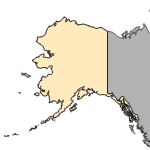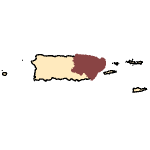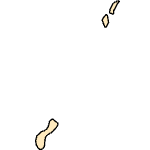Pipa pipa
(Suriname toad)
Amphibians-Frogs
Exotic |
|
Common name: Suriname toad
Taxonomy: available through
www.itis.gov
Native Range: South America: Bolivia, Brazil, Colombia, Ecuador, French Guiana, Guyana, Suriname, Trinidad and Tobago, and Venezuela (AmphibiaWeb, 2012).



|

Alaska |

Hawaii |

Puerto Rico &
Virgin Islands |

Guam Saipan |
Hydrologic Unit Codes (HUCs) Explained
Interactive maps: Point Distribution Maps
Nonindigenous Occurrences:
Table 1. States with nonindigenous occurrences, the earliest and latest observations in each state, and the tally and names of HUCs with observations†. Names and dates are hyperlinked to their relevant specimen records. The list of references for all nonindigenous occurrences of Pipa pipa are found here.
Table last updated 12/15/2025
† Populations may not be currently present.
Ecology: Completely aquatic, found in sluggish rivers and canals with muddy bottoms (AmphibiaWeb, 2012). This frog is entirely aquatic. Females lay approximately 100 eggs. After the male fertilizes the eggs, he attaches them to the female’s back and her skin grows around the eggs. Direct development (meaning they hatch as miniature frogs without going through a tadpole stage) occurs while on the female’s back and the young emerge after 3 to 4 months (Rabb and Snedigar 1960; Rabb and Rabb, 1963).
Pipa pipa is omnivorous and eats worms, insects, crustaceans, and small fishes. It possessed long fingers, which are used to search for food. Once found, the fingers are used to stuff the food into its mouth (Wandzel, 1999).
Means of Introduction: Pet release.
Status: The status is unknown in Puerto Rico.
Impact of Introduction: The impacts of this species are currently unknown, as no studies have been done to determine how it has affected ecosystems in the invaded range. The absence of data does not equate to lack of effects. It does, however, mean that research is required to evaluate effects before conclusions can be made.
References: (click for full references)
AmphibiaWeb: Information on amphibian biology and conservation. 2012. Berkeley, California: AmphibiaWeb. Available from: http://amphibiaweb.org/. Accessed 1/1-13/2012.
Rabb, G. and M. Rabb. 1963. Additonal observations on breeding behavior of the Surinam Toad, Pipa pipa. Copeia (4):636-642.
Rabb, G. and R. Snedigar. 1960. Observations on breeding and development of the Surinam Toad, Pipa pipa. Copeia (1):40-44.
Wandzel, K. 1999. “Pipa pipa”. Animal Diversity Web. Available from:
http://animaldiversity.ummz.umich.edu/accounts/Pipa_pipa/ Accessed 3/5/2013.
Author:
Fuller, P.
Revision Date: 8/6/2013
Citation Information:
Fuller, P., 2025, Pipa pipa (Linnaeus, 1758): U.S. Geological Survey, Nonindigenous Aquatic Species Database, Gainesville, FL, https://nas.er.usgs.gov/queries/FactSheet.aspx?SpeciesID=2728, Revision Date: 8/6/2013, Access Date: 12/15/2025
This information is preliminary or provisional and is subject to revision. It is being provided to meet the need for timely best science. The information has not received final approval by the U.S. Geological Survey (USGS) and is provided on the condition that neither the USGS nor the U.S. Government shall be held liable for any damages resulting from the authorized or unauthorized use of the information.